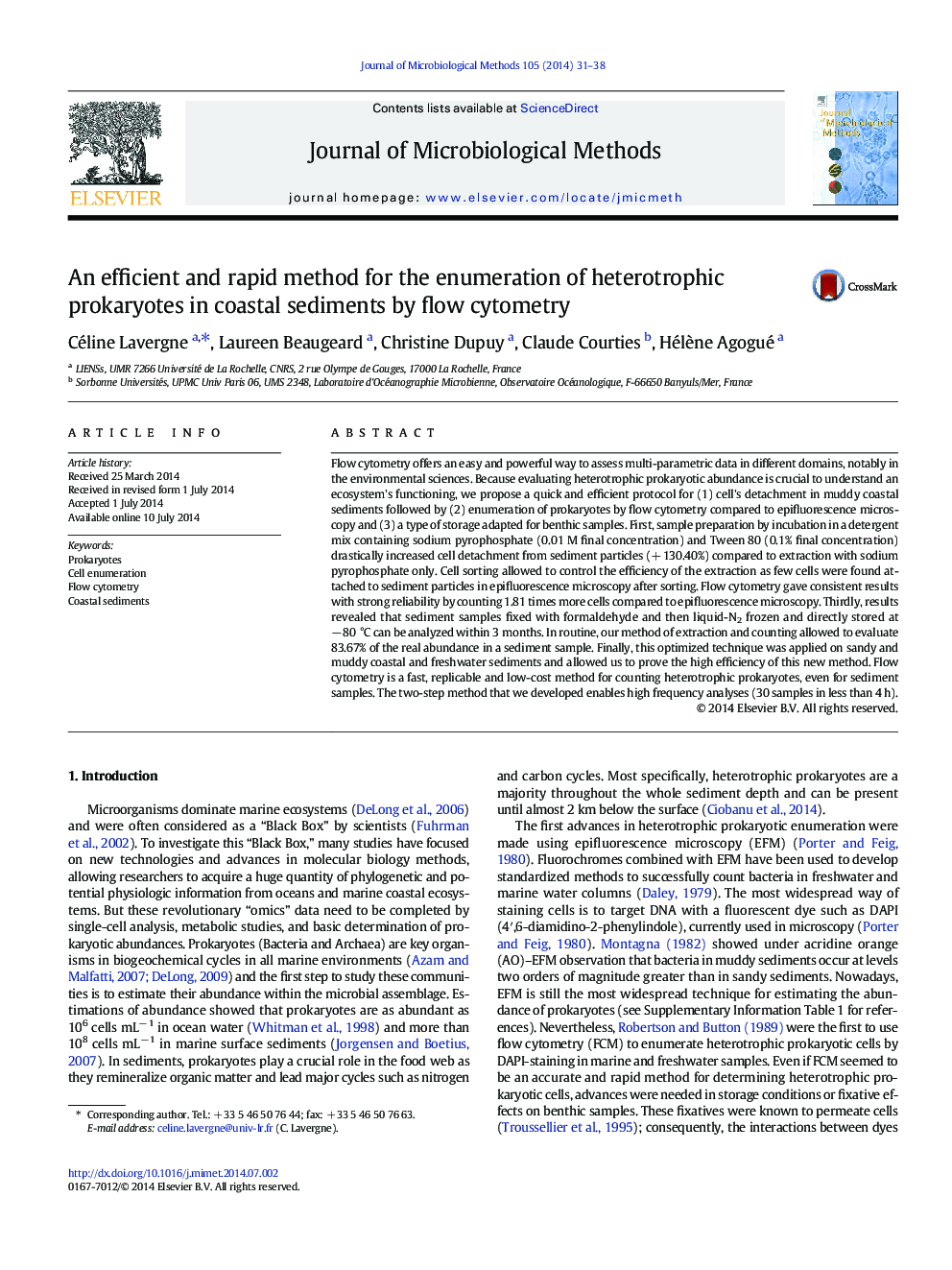| Article ID | Journal | Published Year | Pages | File Type |
|---|---|---|---|---|
| 8422006 | Journal of Microbiological Methods | 2014 | 8 Pages |
Abstract
Flow cytometry offers an easy and powerful way to assess multi-parametric data in different domains, notably in the environmental sciences. Because evaluating heterotrophic prokaryotic abundance is crucial to understand an ecosystem's functioning, we propose a quick and efficient protocol for (1) cell's detachment in muddy coastal sediments followed by (2) enumeration of prokaryotes by flow cytometry compared to epifluorescence microscopy and (3) a type of storage adapted for benthic samples. First, sample preparation by incubation in a detergent mix containing sodium pyrophosphate (0.01 M final concentration) and Tween 80 (0.1% final concentration) drastically increased cell detachment from sediment particles (+ 130.40%) compared to extraction with sodium pyrophosphate only. Cell sorting allowed to control the efficiency of the extraction as few cells were found attached to sediment particles in epifluorescence microscopy after sorting. Flow cytometry gave consistent results with strong reliability by counting 1.81 times more cells compared to epifluorescence microscopy. Thirdly, results revealed that sediment samples fixed with formaldehyde and then liquid-N2 frozen and directly stored at â 80 °C can be analyzed within 3 months. In routine, our method of extraction and counting allowed to evaluate 83.67% of the real abundance in a sediment sample. Finally, this optimized technique was applied on sandy and muddy coastal and freshwater sediments and allowed us to prove the high efficiency of this new method. Flow cytometry is a fast, replicable and low-cost method for counting heterotrophic prokaryotes, even for sediment samples. The two-step method that we developed enables high frequency analyses (30 samples in less than 4 h).
Related Topics
Life Sciences
Biochemistry, Genetics and Molecular Biology
Biotechnology
Authors
Céline Lavergne, Laureen Beaugeard, Christine Dupuy, Claude Courties, Hélène Agogué,
